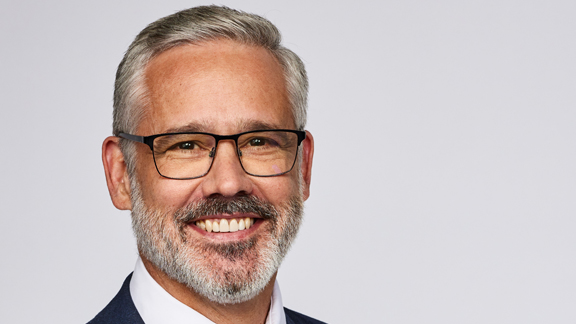Investors remain vigilant as surprises continue

As market uncertainty continues off the back of first quarter surprises, Corrin Collocott says many investors are diversifying to help minimise impacts. (Getty)
The first quarter of 2022 began as most investors expected.
All the talk was about the impact of the Omicron variant of COVID-19 on an already pandemic weary world, and all eyes were on central banks to see what action they’d take in response to the climbing levels of inflation.
Then a sudden escalation in geopolitical tensions took everyone by surprise when, in late February, Russia launched a full-scale military invasion of Ukraine.
Europe and the UK faced the most immediate economic risk from the conflict given their geographical proximity and reliance on trade, namely oil and gas. The situation has done little to ease the pressure on energy prices, already struggling from the effects of low supply, high demand, high carbon prices, supply chain bottlenecks and production outages.
Investors flocked to safe havens like bonds and commodities, and we also saw gold and oil prices rising to multi-year highs.
Central banks focus on inflation
Despite the uncertainty posed by the conflict in Ukraine, central banks seem determined to focus on getting inflation levels under control, whilst still supporting productivity.
Some made bold moves.
In the US, with annual inflation at near 8 per cent - well above the Federal Reserve’s 2 per cent target - it was only a matter of time before the US central bank raised the cash rate, so it was no surprise when it announced a 0.25 per cent rise in March, the first since 2018.
Similarly, the Bank of England raised its cash rate twice during the quarter. With predictions that UK inflation will soar above 8 per cent in the coming months, British consumers are feeling the pinch from higher living costs and have reacted with reduced confidence levels and decreased household spending.
Elsewhere, there’s more of a wait and see approach.
The European Central Bank kept its cash rate on hold, as did the Reserve Bank of Australia. However, both took further steps to wind up their quantitative easing programs. The RBA announced it wants to see clarity around the global supply-chain problems and the interplay between the historical low levels of unemployment and the impact on wages growth before it raises rates, leaving analysts to forecast it will hold firm until as early as June, after which we’ll potentially see four rate hikes before the end of the year.
The pandemic no longer dominates headlines
Most of the world is now learning how to live with the pandemic.
However, the government of the People’s Bank of China is still pursuing its ‘zero case’ policy, which includes locking down entire cities. This is prolonging the effect of supply chain disruptions and labour shortages and has subsequently caused the cost of materials and product to soar. Economic activity has slowed and, in response, the PBOC slashed key lending rates for businesses and consumers to try and cushion the slowdown. It appears to be working, as inflation pressures eased during the March quarter, but the economy is likely to need ongoing support, particularly in areas where the pandemic is having the most impact, like services and manufacturing.
Closer to home
Early in the March quarter, Omicron wreaked havoc with Australians’ ability to travel, further supply chain disruptions and staff shortages, particularly in the services sector. The ‘hot’ property market also began to slow as stretched affordability, better supply and a rise in fixed mortgage rates took effect.
But overall, Australia’s economy showed signs of resilience, led largely by improved consumer spending.
Other big news over the quarter was the disastrous floods in Queensland and New South Wales, prompting many conversations about the increasing frequency and intensity of natural disasters in Australia due to climate change, and how we can be better prepared both before and after these events.
The March Federal Budget announced additional spending for defence and disaster relief but, given we’re in an election year, the Government’s primary objective was to strike a balance between budget repair and easing cost pressures for households without further fuelling inflation.
The sheer scale of rebuilding required in flood-ravaged regions will almost certainly hamper short-term economic growth in Australia, as well as the ongoing threat from the fluid situation in Ukraine, which is beginning to impact consumer sentiment.
How have markets reacted?
Most major markets started the March quarter in the red, returning a negative result in January. In fact, global markets had their largest January fall since the GFC and the largest one month fall since March 2020.
But the Australian market bounced back in February and continued this trend in March. The S&P/ASX 300 outperformed global markets in March, rising 6.9 per cent, led by the IT and energy sectors.
Global markets were more mixed.
The US delivered positive returns in March after a weak January and February, but Europe remained either negative or flat and Chinese markets suffered from heavy falls in Chinese equities.
Geopolitical uncertainty looks set to continue as a resolution to the conflict between Russia and Ukraine remains elusive.
Given the uncertain outlook, many investors are ensuring their investments are diversified across different markets and asset classes to help minimise the impact of any single economic or market event.
The current situation has reaffirmed there is no place for complacency when investing. As one crisis resolves, there’s another waiting to unfold and the key to achieving good long-term returns is to hold the course, remain calm and avoid making any hasty short-term decisions with investments.
This information in this article is of a general nature only. It does not take into account your personal objectives, financial situation or needs and so you should consider its appropriateness, having regard to these factors and your personal circumstances before acting on it. Information from third parties is believed to be reliable however it has not been independently verified. While the information in this communication is provided in good faith, no warranty is given that it is accurate, reliable or free from error or omission. Past performance is not a reliable indicator of future performance. BT Funds Management Limited ABN 63 002 916 458 is the trustee of and issuer of interests in BT Super, which forms part of the Retirement Wrap ABN 39 827 542 991. A product disclosure statement (PDS) is available for each of these products by calling 132 135 or visiting bt.com.au.. You should obtain and consider the PDS before deciding whether to acquire, continue to hold or dispose of interests in BT Super. An investment in BT Super is not an investment in, deposit with or any other liability of Westpac Banking Corporate ABN 33 007 457 141 (Westpac) or any other company in the Westpac Group. It is subject to investment risk, including possible delays in repayment or loss of income and principal invested. Westpac and its related entities do not stand behind or otherwise guarantee the capital value or investment performance of the BT Super product.




